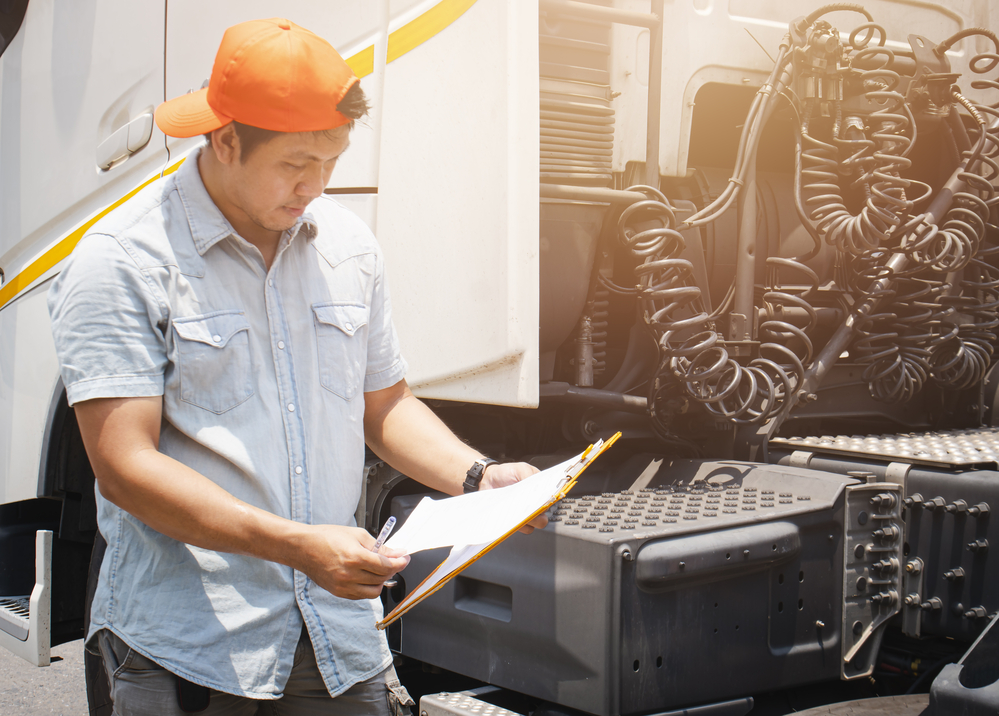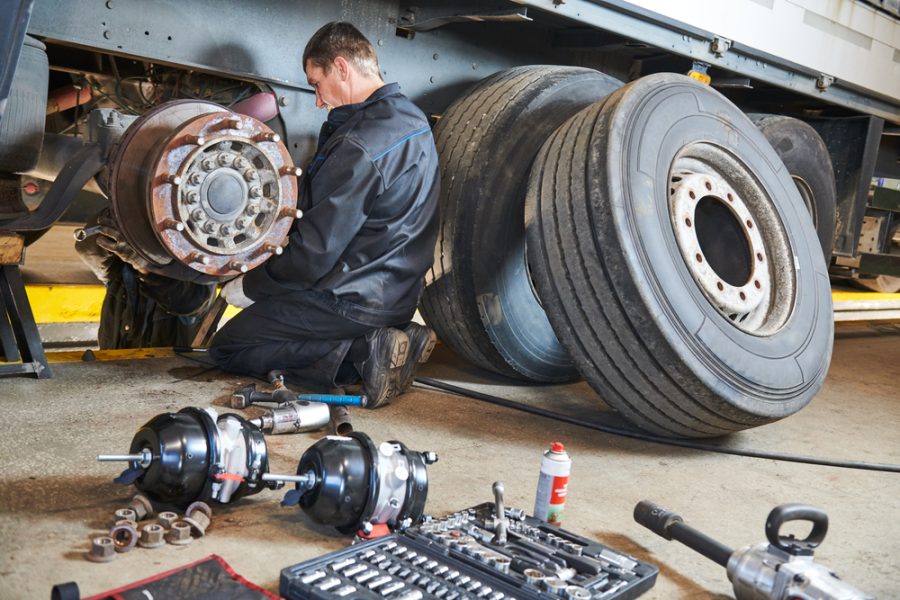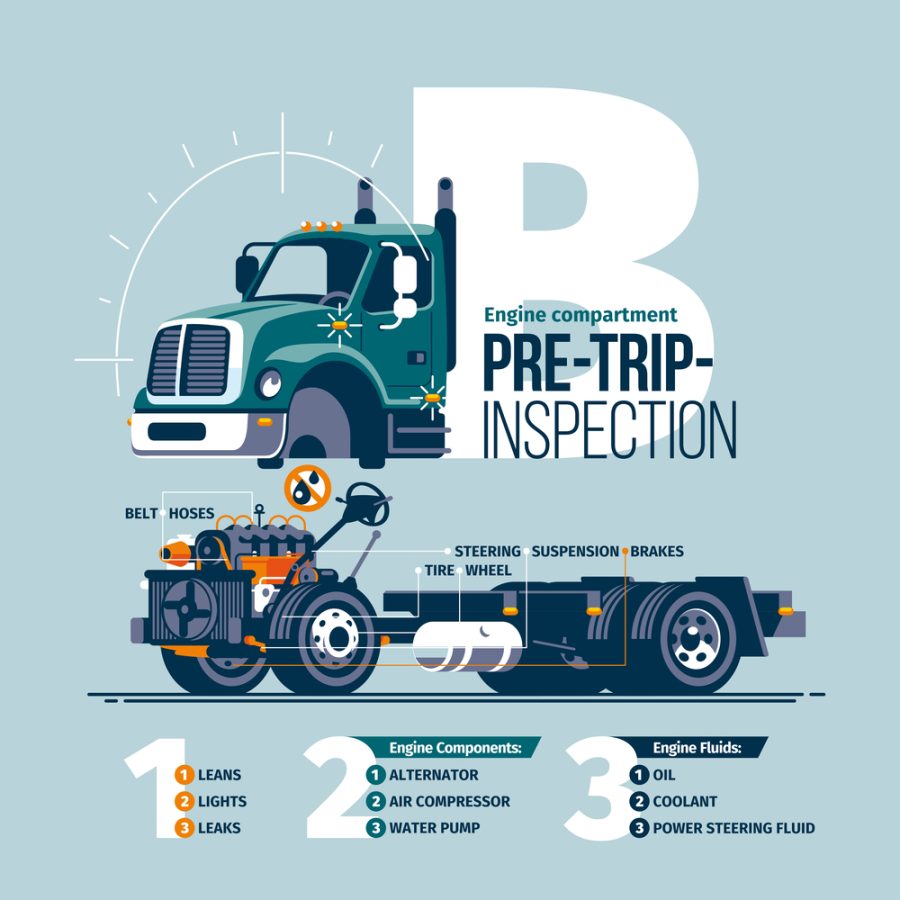Introduction
As a truck driver, your vehicle safety is not just about you but for others on the road too. Regular checks on your truck’s critical systems can prevent minor issues from turning into major problems that can lead to accidents. Among the many parts of your truck, the steering wheel, brake pedal, and tires are the most critical. These are the foundation of your truck’s safety and handling and if they’re not working properly, you’ll have a rough and unsafe ride.
For you, the steering wheel is more than just a tool to turn; it’s your link to the road ahead. It must respond to your inputs without any unexpected resistance or sloppiness. The brake pedal is your control for speed and safe stopping and must be checked for responsiveness and firmness to prevent any delay in braking. Your tires are the only parts of your truck that touch the road and need regular checks for wear, pressure, and tread depth. This is for maximum grip and stability on any surface. Inspecting these components is not just about following safety protocols; it’s about making every trip safer for you and everyone else on the road.
DOT Inspections
DOT inspections are a big part of the trucking industry and are thorough checks to ensure that both the vehicle and the driver meet the strict safety standards set by the Department of Transportation. These are not just routine procedures; they are key to road safety, accident prevention, and commercial vehicles operating within legal safety limits. The importance of DOT inspections goes beyond compliance; they are a driver’s commitment to safety and a company’s adherence to high operational standards. By identifying and fixing potential safety issues before they can cause serious incidents, DOT inspections are a big protection not just for the drivers and their cargo but for everyone on the road.
The DOT has different levels of inspections, each with its own set of requirements to systematically check various aspects of vehicle safety and driver compliance. These range from Level I which is the most comprehensive, a detailed inspection of the vehicle and driver’s documents to Level VI which is specific to carriers of radioactive materials. Other levels focus on the vehicle’s braking system, fuel system, lights, steering mechanism and tires, and the driver’s license, medical certificate, and hours of service. Each level is designed to check specific components or documentation to thoroughly evaluate the vehicle and driver’s ability to drive safely on the road. Knowing these levels and preparing for them can make the inspection process smoother for drivers and their vehicles to be compliant and most importantly, safe on the road.
Steering System Inspection
A firm steering wheel that responds to your inputs without lag or sloppiness is key to safe driving especially when hauling heavy loads over long distances. It allows you to maneuver the truck accurately on various road conditions from tight turns in urban areas to stability on the highway. A compromised steering system can increase the risk of accidents so regular inspections and maintenance is part of your driving routine.
Common issues that can occur in the steering system are uneven tire wear, tire failure, and general steering mechanism problems. Uneven tire wear often means misalignment or suspension issues both of which can affect steering control. Tire failures such as blowouts or excessive wear can also be caused by neglected steering system maintenance and are a serious safety risk. Regular maintenance checks are crucial to identify these issues early on so the steering system remains in top condition.
To detect steering system problems during inspections, follow these practices. Listen for unusual sounds when turning the steering wheel; clicking, grinding, or whining sounds mean there’s an issue. Check the steering wheel’s response; any delay or difficulty in steering means there’s a problem. Also visually inspect the tires for uneven wear patterns which can tell you the condition of the steering system. By doing these inspection habits, truck drivers can improve their vehicle’s safety and performance and have a safer driving experience for themselves and others on the road.
Brake System Inspection
The brake system is the backbone of vehicle safety, it’s the one that allows drivers to control speed and stop the vehicle. Within this system, the brake pedal and brake pads are the key. The brake pedal is the driver’s direct link to slow down or stop the vehicle, it should feel responsive and firm to have precise control over braking. The brake pads that touch the rotor to stop the vehicle should be in top condition to prevent longer stopping distance and optimal safety. Since they are critical, regular inspection of these components is necessary to ensure the vehicle is safe to operate especially in emergency situations where every second counts.
A brake inspection checklist should include the following: brake fluid, brake caliper, brake pads, and the overall braking system. Checking the brake fluid is to maintain the hydraulic pressure for braking. The brake caliper which holds the brake pads and presses it against the rotor should be inspected for any signs of wear or damage that can affect braking. Brake pads should be closely inspected for thickness and wear; thin or unevenly worn pads can reduce braking performance dramatically. Also, the overall braking system should be checked for any signs of wear or malfunction including the brake lines and hoses for leaks or blockages.
Signs of brake system wear that drivers should look out for are uneven pad wear which means misalignment or caliper issue; slow response where the vehicle takes longer to stop; and brake light warnings on the dashboard which can mean various issues in the braking system. Identifying these signs early can prevent bigger problems later on and ensure the vehicle remains safe and reliable. Brake inspections and maintenance are not just about compliance with safety regulations; it’s part of responsible vehicle ownership.
Tire Inspection and Maintenance
Tire inspection and maintenance are crucial for vehicle control especially when it comes to steer tires and front tires which are the one that navigates and maneuver the vehicle. These tires carry a big portion of the vehicle’s weight and are essential for direction and stability so their condition is critical for safe driving. Identifying tire failure risks and recognizing signs of wear is key to preventing accidents.
Issues like uneven tread wear, deep cuts, or bulges in the sidewall can compromise tire integrity and subsequently vehicle control. Also maintaining proper tire pressure is not only for vehicle safety but also for fuel efficiency. Incorrect tire pressure can lead to tire wear, reduced traction, and higher fuel consumption. Regularly checking tire pressure and adjusting it according to the manufacturer’s recommendation can extend tire life and performance and have a safer and more economical driving experience.
Safe Vehicle Operation
Safe vehicle operation means understanding the components that make the vehicle controlled and safe to drive. The gas pedal for instance is the one that regulates vehicle speed and allows drivers to adjust their pace according to traffic flow, road conditions, and speed limit. Its responsiveness and condition are critical for smooth acceleration and deceleration so regular checks are necessary to prevent any issues that can affect vehicle control. The parking brake also plays a big role in vehicle safety not just when the vehicle is parked but also as an emergency braking system if the main brakes fail. Proper use and maintenance of the parking brake ensures the vehicle stays stationary when parked especially on inclines so it won’t roll unintentionally.
Brake and tire maintenance is crucial for overall vehicle safety. Effective brakes are necessary to stop the vehicle within a safe distance while well-maintained tires provide the traction to stop safely without skidding or losing control. Brake inspections should include checking the brake pads for wear, brake fluid level, and the overall system functioning as intended. Tire maintenance is monitoring tread depth, looking for signs of wear or damage, and keeping tires inflated to the manufacturer’s recommended pressure. All these maintenance practices not only extend the life of the brakes and tires but also make the driving experience safer for the driver and other road users.
Accident and Risk Prevention
Accidents and risks on the road are a top concern for drivers and brake and tire failure is one of the biggest risks that can lead to serious incidents. These failures not only take away the driver’s control of the vehicle but also increase the chances of collision and off-road accidents. Regular inspection is necessary in this case as a preventive measure to identify and fix the problem before it becomes an emergency situation.
These inspections ensure that brakes are responsive and tires are in good condition with adequate tread depth and no signs of wear or damage that can lead to blowouts or loss of traction. Addressing common issues like blowouts, steering problems and brake failure through regular maintenance can reduce accidents by a big margin. By prioritizing regular check-ups and maintenance drivers can enhance their vehicle’s safety and reliability and have safer roads for everyone.
Conclusion
These preventive measures are the foundation of safe driving, drivers can identify potential problems before they become hazardous. By prioritizing regular checks of the brake system, tires, steering mechanism, and other critical components drivers can prevent accidents and maintain their vehicle’s reliability. This proactive approach to vehicle maintenance not only protects the driver and passengers but also the overall safety of the road for everyone. Drivers are encouraged to see regular vehicle inspections not as a legal requirement or a routine task but as part of their commitment to safety. Make these inspections a habit in their driving routine which can reduce accidents and have a safer driving experience for all.




